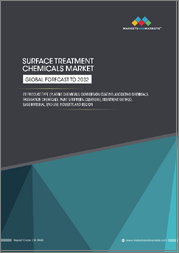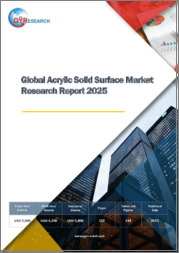
|
시장보고서
상품코드
1561814
유럽의 운송용 표면 소재 시장 : 비닐, 가죽, 직물 및 기타 대체 소재Europe Surface Materials for Transportation Market: Focus on Vinyl, Leather, Fabric, and Other Alternatives |
||||||
유럽의 운송용 표면 소재 시장 규모는 2023년 59억 7,000만 달러에서 예측 기간 동안 연평균 7.46%의 CAGR을 기록하며 2033년에는 122억 7,000만 달러 규모로 성장할 것으로 예상됩니다.
철도, 자동차, 선박, 항공 등 주요 산업이 지속적으로 성장함에 따라 내장재, 대시보드, 천장재 등을 포함한 표면 소재는 유럽 운송 사업에서 높은 수요를 보이고 있습니다. 특히 독일, 프랑스, 이탈리아 등 유럽 주요 경제권에서 자동차 분야의 표면 소재 사용 확대가 2023년부터 2033년까지 시장 성장을 촉진할 것으로 예상됩니다. 섬유, 천연가죽, 합성 피혁, 부직포 등 소재 트렌드도 애프터마켓의 커스터마이징 트렌드 증가에 힘입어 성장세를 보이고 있습니다. 이는 자동차 생산량 증가와 함께 시장 성장에 도움이 될 것으로 보입니다. 반면, 가격에 민감한 유럽 시장에서는 장착 비용의 증가와 원자재 가격의 변동으로 인해 소비자의 구매를 저해할 수 있어 시장 전체에 도전이 될 수 있습니다.
| 주요 시장 통계 | |
|---|---|
| 예측 기간 | 2023-2033년 |
| 2023년 평가 | 59억 7,000만 달러 |
| 2033년 전망 | 122억 7,000만 달러 |
| CAGR | 7.46% |
유럽의 운송용 표면 소재 시장은 자동차 대시보드, 천장, 내장재 공급을 통해 이 지역의 대규모 운송 및 제조 부문에서 중요한 역할을 담당하고 있습니다. 이 시장이 서비스를 제공하는 주요 산업으로는 철도, 자동차, 항공, 선박 등이 있으며, 이들 산업은 모두 유럽 경제에 필수적인 산업입니다. 독일, 프랑스, 이탈리아 등의 국가에는 명성이 높은 자동차 센터가 존재하기 때문에 우수한 첨단 소재에 대한 수요가 증가하고 있습니다.
고급스럽고 개성 있는 자동차 인테리어에 대한 고객 수요 증가와 재료공학 기술의 발전으로 인해 시장이 활성화되고 있습니다. 특히 유럽의 엄격한 환경법에 따라 재활용이 가능하고 친환경적인 소재에 대한 소비자 수요가 증가하면서 지속가능한 솔루션이 최우선 과제로 떠오르고 있습니다. 전기자동차(EV)로의 전환은 에너지 효율을 지원하는 첨단 경량 표면 소재의 필요성을 더욱 가속화시키고 있습니다.
시장 분류
세분화 1: 용도별
- 인테리어
- 헤드라이너
- 대시보드
- 기타
세분화 2: 판매 채널별
- OEM
- 애프터마켓
세분화 3: 최종사용자 산업별
- 자동차
- 선박
- 항공
- 철도
세분화 4: 소재 유형별
- 비닐
- 가죽
- 직물
- 기타 지속가능한 대체 소재
세분화 5: 국가별
- 독일
- 프랑스
- 영국
- 이탈리아
- 기타
유럽의 운송용 표면 소재 시장을 조사했으며, 산업 동향, 기술 및 특허 동향, 법규 환경, 시장 성장 촉진요인 및 억제요인, 시장 규모 추정 및 예측, 각 부문별·주요 국가별 상세 분석, 경쟁 상황, 주요 기업 프로파일 등의 정보를 정리하여 전해드립니다.
목차
주요 요약
조사 범위
제1장 시장 : 업계 전망
- 동향 : 현재 및 향후의 영향 평가
- 동향 분석 : 운송 시장용 표면 소재
- 고급차나 고성능차 채용 증가
- 교통의 쾌적성과 미관을 향한 소비자 행동 변화
- 공급망 개요
- 밸류체인 분석
- 가격 예측
- R&D 리뷰
- 특허 출원 동향(국가·기업별)
- 규제 상황
- 이해관계자 분석
- 사용 사례
- 최종사용자와 구입 기준
- 시장 역학 개요
- 시장 성장 촉진요인
- 시장 과제
- 시장 기회
- 표면 소재와 자동차 진보의 통합
- 표면 소재 선택 기준
- 직물과 특성의 주요 비교
- 화학 조성 평가
- 용도별 호환성
제2장 운송용 표면 소재 시장 : 지역별
- 운송용 표면 소재 시장 : 지역별
- 지역별 개요
- 유럽
- 시장
- 용도
- 제품
- 유럽(국가별)
제3장 시장 : 경쟁 상황과 기업 개요
- 다음 프론티어
- 경쟁 벤치마킹
- 시장 점유율 분석(소재별)
- 기업 개요
- AUTOSTOP AVIATION
- Schoeller Textil AG
- MIKO srl
- Covestro AG
- Continental AG
- BASF SE
- Infinited Fiber Company
제4장 조사 방법
ksm 24.10.04Introduction to Europe Surface Materials for Transportation Market
The Europe surface materials for transportation market is projected to reach $12.27 billion by 2033 from $5.97 billion in 2023, growing at a CAGR of 7.46% during the forecast period 2023-2033. Surface materials, which include upholstery, dashboards, headliners, and more, are in high demand in the European transportation business as major industries including rail, automobile, marine, and aviation continue to grow. The growing use of surface materials, particularly in the automotive sector across leading European economies like Germany, France, Italy, and others, is anticipated to propel the market's growth between 2023 and 2033. The market for materials including textiles, natural and synthetic leather, and non-wovens is also being driven by the increasing trend of aftermarket customization. This is probably going to help with market growth along with the increase in car production. However, growing installation costs and fluctuating raw material prices in the price-sensitive European market could prevent consumer uptake, posing a challenge to the broader surface materials sector for transportation.
Market Introduction
| KEY MARKET STATISTICS | |
|---|---|
| Forecast Period | 2023 - 2033 |
| 2023 Evaluation | $5.97 Billion |
| 2033 Forecast | $12.27 Billion |
| CAGR | 7.46% |
The European market for surface materials for transportation plays a crucial role in the region's larger transportation and manufacturing sectors by providing materials for dashboards, headliners, and upholstery in automobiles. Important industries served by the market include rail, automobile, aviation, and maritime, all of which are vital to the European economy. The need for superior and cutting-edge materials is only increasing due to the presence of well-established automotive centers in nations like Germany, France, and Italy.
The market is fueled by things like rising customer demand for high-end, personalized car interiors and advances in material engineering technology. Growing consumer demand for recyclable and environmentally friendly materials has made sustainable solutions a top priority, particularly in light of Europe's strict environmental laws. The transition to electric cars (EVs) further accelerates the need for advanced, lightweight surface materials that support energy efficiency.
However, the market is challenged by rising production and installation costs as well as volatile raw material prices. Despite these challenges, the European surface materials market for transportation is well-positioned to expand thanks to its robust industrial base, innovation-focused approach, and sustainability-focused focus.
Market Segmentation
Segmentation 1: by Application
- Upholstery
- Headliner
- Dashboard
- Others
Segmentation 2: by Sales Channel
- OEM
- Aftermarket
Segmentation 3: by End-Use Industry
- Automotive
- Marine
- Aviation
- Rail
Segmentation 4: by Material Type
- Vinyl
- Leather
- Fabric
- Other Sustatinable Alternatives
Segmentation 5: by Country
- Germany
- France
- U.K.
- Italy
- Rest-of-Europe
How can this report add value to an organization?
Product/Innovation Strategy: The product segment helps the reader understand the different surface materials, various sales channels such as OEM and aftermarket, end-use industries, and different material types involved in the production of surface materials. Moreover, the study provides the reader with a detailed understanding of the Europe surface materials for transportation market based on the end user (automotive, marine, aviation, rail and others).
Growth/Marketing Strategy: The Europe surface materials for transportation market has seen major development by key players operating in the market, such as business expansions, partnerships, collaborations, mergers and acquisitions, and joint ventures. The favored strategy for the companies has been product developments, business expansions, and acquisitions to strengthen their position in the global surface materials for transportation market.
Competitive Strategy: Key players in the Europe surface materials for transportation market analyzed and profiled in the study involve surface materials manufacturers and the overall ecosystem. Moreover, a detailed competitive benchmarking of the players operating in the surface materials for transportation market has been done to help the reader understand how players stack against each other, presenting a clear market landscape. Additionally, comprehensive competitive strategies such as partnerships, agreements, acquisitions, and collaborations will aid the reader in understanding the untapped revenue pockets in the market.
Key Market Players and Competition Synopsis
The companies that are profiled have been selected based on input gathered from primary experts, analyzing company coverage, product portfolio, and market penetration.
Some of the prominent established names in this market are:
- Schoeller Textil AG
- MIKO srl
- Covestro AG
- Continental AG
- BASF SE
Table of Contents
Executive Summary
Scope of the Study
Scope and Definition
1 Market: Industry Outlook
- 1.1 Trends: Current and Future Impact Assessment
- 1.1.1 Trend Analysis: Surface Materials for Transportation Market
- 1.1.2 Increasing Adoption of Luxury and Performance Vehicles
- 1.1.3 Changing Consumer Behavior toward Comfort and Aesthetics in Transportation
- 1.2 Supply Chain Overview
- 1.2.1 Value Chain Analysis
- 1.2.2 Pricing Forecast (by Material Type, $/Meter)
- 1.3 Research and Development Review
- 1.3.1 Patent Filing Trend (by Country, Company)
- 1.4 Regulatory Landscape
- 1.5 Stakeholder Analysis
- 1.5.1 Use Case
- 1.5.2 End User and Buying Criteria
- 1.6 Market Dynamics Overview
- 1.6.1 Market Drivers
- 1.6.1.1 Increase in Demand for Aftermarket Customer Modifications
- 1.6.1.2 Increase in Vehicle Production
- 1.6.2 Market Challenges
- 1.6.2.1 High Material and Installation Cost
- 1.6.2.2 Increase in Regulations for Materials
- 1.6.3 Market Opportunities
- 1.6.3.1 Advancements in Technology for Surface Materials
- 1.6.3.2 Growth in Adoption of Smart Features
- 1.6.1 Market Drivers
- 1.7 Integration of Surface Materials with Ongoing Automotive Advancements
- 1.8 Selection Criteria for Surface Materials
- 1.8.1 Key Comparisons between Fabrics and Properties
- 1.8.1.1 Vinyl
- 1.8.1.2 Natural Leather
- 1.8.1.2.1 Synthetic Leather
- 1.8.1.2.2 Polyurethane (PU)
- 1.8.1.2.3 Polyvinyl Chloride (PVC)
- 1.8.1.2.4 Polyester
- 1.8.1.2.5 Others
- 1.8.1.3 Fabric
- 1.8.1.3.1 Polyester
- 1.8.1.3.2 Natural Fabric
- 1.8.1.3.3 Wool/Nylon Blend
- 1.8.1.4 Other Sustainable Alternatives
- 1.8.1.4.1 Recycled Materials
- 1.8.1.4.2 Plant- and Bio-Based Materials
- 1.8.1.4.3 Bio-Based Fabric
- 1.8.2 Evaluation of Chemical Composition
- 1.8.3 Application-Wise Compatibility
- 1.8.1 Key Comparisons between Fabrics and Properties
2 Surface Materials for Transportation Market (by Region)
- 2.1 Surface Materials for Transportation Market (by Region)
- 2.2 Regional Summary
- 2.3 Europe
- 2.3.1 Market
- 2.3.1.1 Key Market Participants in Europe
- 2.3.1.2 Business Drivers
- 2.3.1.3 Business Challenges
- 2.3.2 Application
- 2.3.3 Product
- 2.3.4 Europe (by Country)
- 2.3.4.1 Germany
- 2.3.4.1.1 Application
- 2.3.4.1.2 Product
- 2.3.4.2 France
- 2.3.4.2.1 Application
- 2.3.4.2.2 Product
- 2.3.4.3 U.K.
- 2.3.4.3.1 Application
- 2.3.4.3.2 Product
- 2.3.4.4 Italy
- 2.3.4.4.1 Application
- 2.3.4.4.2 Product
- 2.3.4.5 Rest-of-Europe
- 2.3.4.5.1 Application
- 2.3.4.5.2 Product
- 2.3.4.1 Germany
- 2.3.1 Market
3 Markets - Competitive Landscaped and Companies Profiled
- 3.1 Next Frontiers
- 3.2 Competitive Benchmarking
- 3.3 Market Share Analysis (by Material Type)
- 3.4 Company Profiles
- 3.4.1 AUTOSTOP AVIATION
- 3.4.1.1 Overview
- 3.4.1.2 Top Products/Product Portfolio
- 3.4.1.3 Top Competitors
- 3.4.1.4 Target Customers/End-Use Industries
- 3.4.1.5 Key Personnel
- 3.4.1.6 Analyst View
- 3.4.1.7 Market Share (2022)
- 3.4.2 Schoeller Textil AG
- 3.4.2.1 Overview
- 3.4.2.2 Top Products/Product Portfolio
- 3.4.2.3 Top Competitors
- 3.4.2.4 Target Customers/End-Use Industries
- 3.4.2.5 Key Personnel
- 3.4.2.6 Analyst View
- 3.4.2.7 Market Share (2022)
- 3.4.3 MIKO srl
- 3.4.3.1 Overview
- 3.4.3.2 Top Products/Product Portfolio
- 3.4.3.3 Top Competitors
- 3.4.3.4 Target Customers/End-Use Industries
- 3.4.3.5 Key Personnel
- 3.4.3.6 Analyst View
- 3.4.3.7 Market Share (2022)
- 3.4.4 Covestro AG
- 3.4.4.1 Overview
- 3.4.4.2 Top Products/Product Portfolio
- 3.4.4.3 Top Competitors
- 3.4.4.4 Target Customers/End-Use Industries
- 3.4.4.5 Key Personnel
- 3.4.4.6 Analyst View
- 3.4.4.7 Market Share (2022)
- 3.4.5 Continental AG
- 3.4.5.1 Overview
- 3.4.5.2 Top Products/Product Portfolio
- 3.4.5.3 Top Competitors
- 3.4.5.4 Target Customers/End-Use Industries
- 3.4.5.5 Key Personnel
- 3.4.5.6 Analyst View
- 3.4.5.7 Market Share (2022)
- 3.4.6 BASF SE
- 3.4.6.1 Overview
- 3.4.6.2 Top Products/Product Portfolio
- 3.4.6.3 Top Competitors
- 3.4.6.4 Target Customers/End-Use Industries
- 3.4.6.5 Key Personnel
- 3.4.6.6 Analyst View
- 3.4.6.7 Market Share (2022)
- 3.4.7 Infinited Fiber Company
- 3.4.7.1 Overview
- 3.4.7.2 Top Products/Product Portfolio
- 3.4.7.3 Top Competitors
- 3.4.7.4 Target Customers/End-Use Industries
- 3.4.7.5 Key Personnel
- 3.4.7.6 Analyst View
- 3.4.7.7 Market Share (2022)
- 3.4.1 AUTOSTOP AVIATION
4 Research Methodology
- 4.1 Data Sources
- 4.1.1 Primary Data Sources
- 4.1.2 Secondary Data Sources
- 4.1.3 Data Triangulation
- 4.2 Market Estimation and Forecast



















